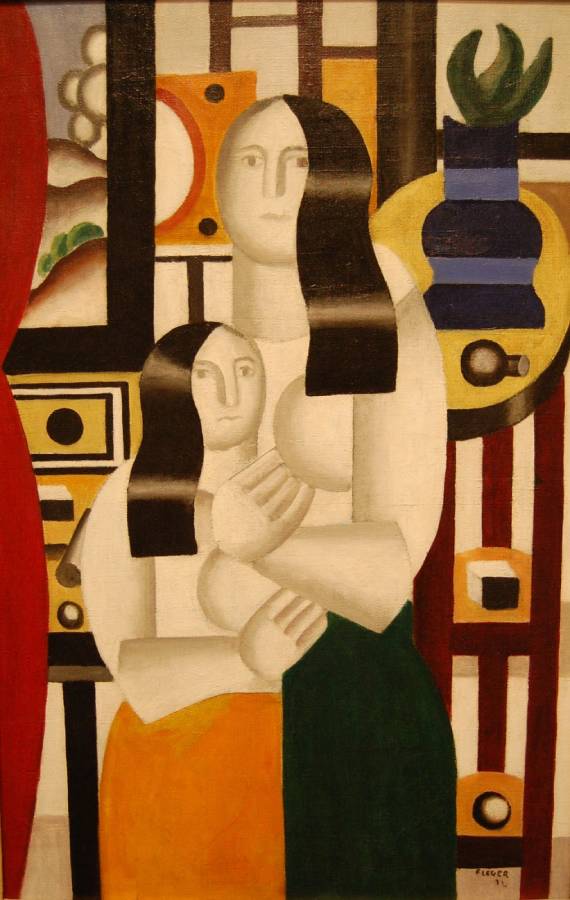Léger, Fernand (1881-1955)
Deux femmes (Two Women)
1922
Oil on canvas, 90.8 x 58.4 cm
National Gallery of Art, Washington
Fernand Léger originated a distinct cubist style in the twentieth century. In the early 1920s he both embraced and influenced the aesthetic of Purism as espoused by his friends Le Corbusier and Amedée Ozenfant. The clean, geometric forms of mechanized industry and mass production were prized as the harbingers of a renewed social and aesthetic order. Many of Léger‘s paintings took mechanical devices as their subject, and all of his paintings were informed by a style of cool precision and exacting workmanship. Women occupied a traditional place within Léger‘s ideal new order. Counterpoints to the urban world of industry and work, Léger‘s many depictions of women embody a domestic realm of tranquility and leisure. He treated his depictions of women no differently than the most austere mechanical form: edges are sharp, colors are distinct, and modeling follows a conspicuously stylized formula. Léger often produced more than one version of his important compositions, and Two Women, 1922, is no exception. The first version (marked “1er etat” on its back), Les deux femmes debout, in the Musée National d’Art Moderne, Paris, is slightly smaller than Two Women.2 The two paintings are close in almost every detail, differing principally in the landscape viewed from the window at the upper left. Two Women also relates in a more general fashion to a number of paintings by the artist of parallel subject. These include the monumental La Mère et l’enfant of 1922 and Nus sur fond rouge, 1923 (both Kunstmuseum, Basel), and the Deux femmes sur fond bleu of 1927 (private collection, Solothurn), among others. All of these paintings show two women, one older, one younger, either in an interior or against a uniform background. In style and subject the work shown here relates as well to one of Léger‘s most famous series, that culminating in Le Grande Déjeuner of 1921 (The Museum of Modern Art, New York). Within this large group of paintings, Two Women is notable for its poignant combination of sharply delineated details of a domestic interior and precise human forms with the evident warmth and tenderness of the figures who clasp each other tightly. The first major work by Léger to enter the National Gallery collection, Two Women is an indispensable addition to the Gallery‘s holdings. The collection already includes the fascinating Léger portrait Maud Dale, 1935, and Woman with a Mirror, 1929. Two Women is a particularly fine treatment of one of the artist’s key subjects, painted at one of his most important and original moments. A woman and girl stand together in an embrace in the center of a colorful interior in this stylized vertical painting. The bodies of the women are made up of geometric spherical, conical, or columnar forms. Their skin and torsos are chalk white shaded with gray. To our left, a field of marigold yellow suggests a skirt on the girl. The woman, to our right, has a pine-green skirt. For each one, their hair is indicated by what looks like a shiny strip of black, curved like broad finger waves to cascade down one side of their heads and faces. Light glints horizontally on the bent areas, like vinyl. Both have round eyes under curved brows, straight noses squared off at the bottom, and squiggles for their mouths. Their bodies are angled toward each other. The background is made up of black and burgundy-red horizontal and vertical lines and flat geometric forms to suggest shelving with objects, including a blue vase and spiky green plant around a window or painting, framed in black, to our left. A shallowly curving, cranberry-red form up the left edge suggests a curtain. The artist signed and dated the lower right, “F.LEGER 22.” (NGA)
